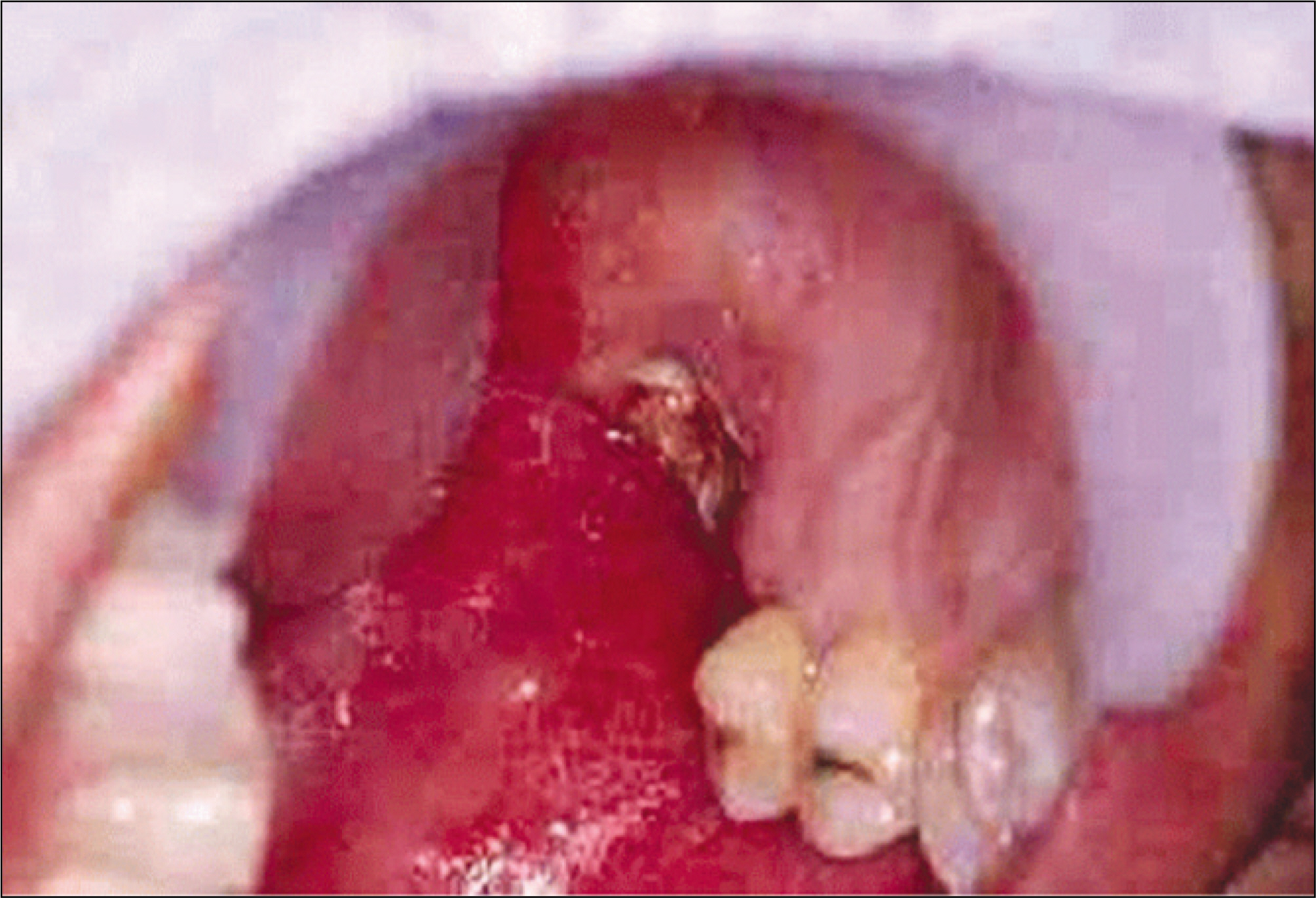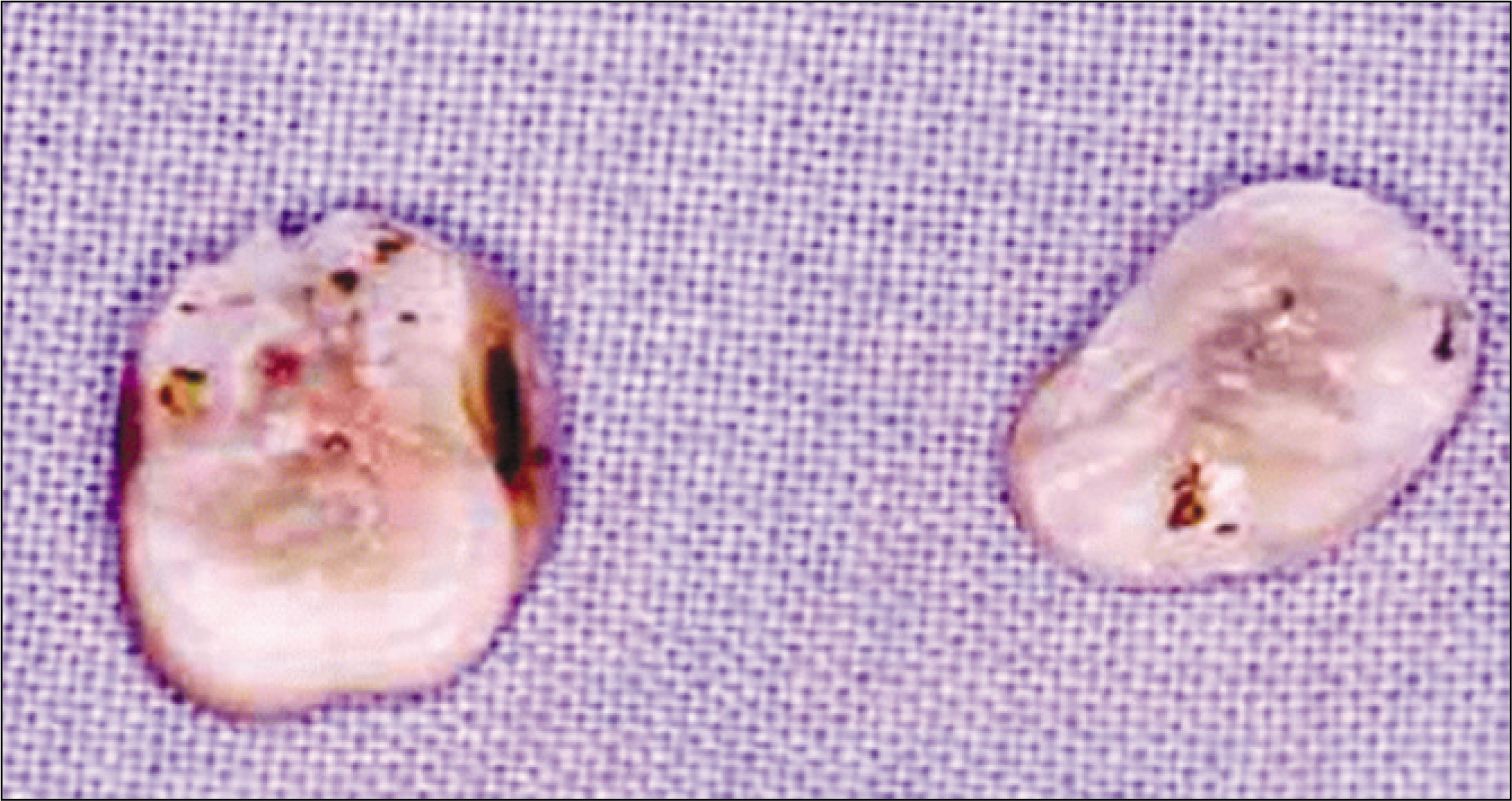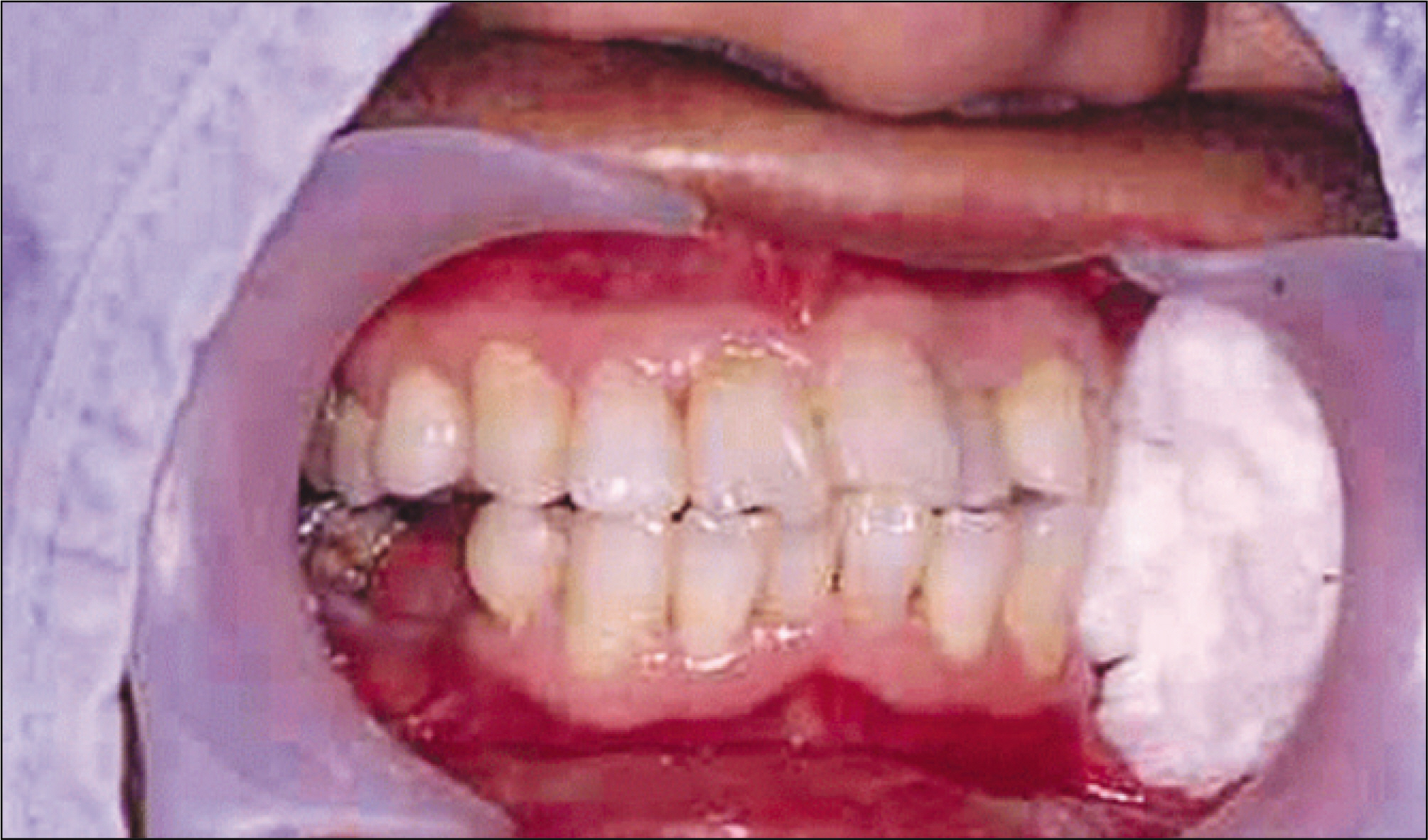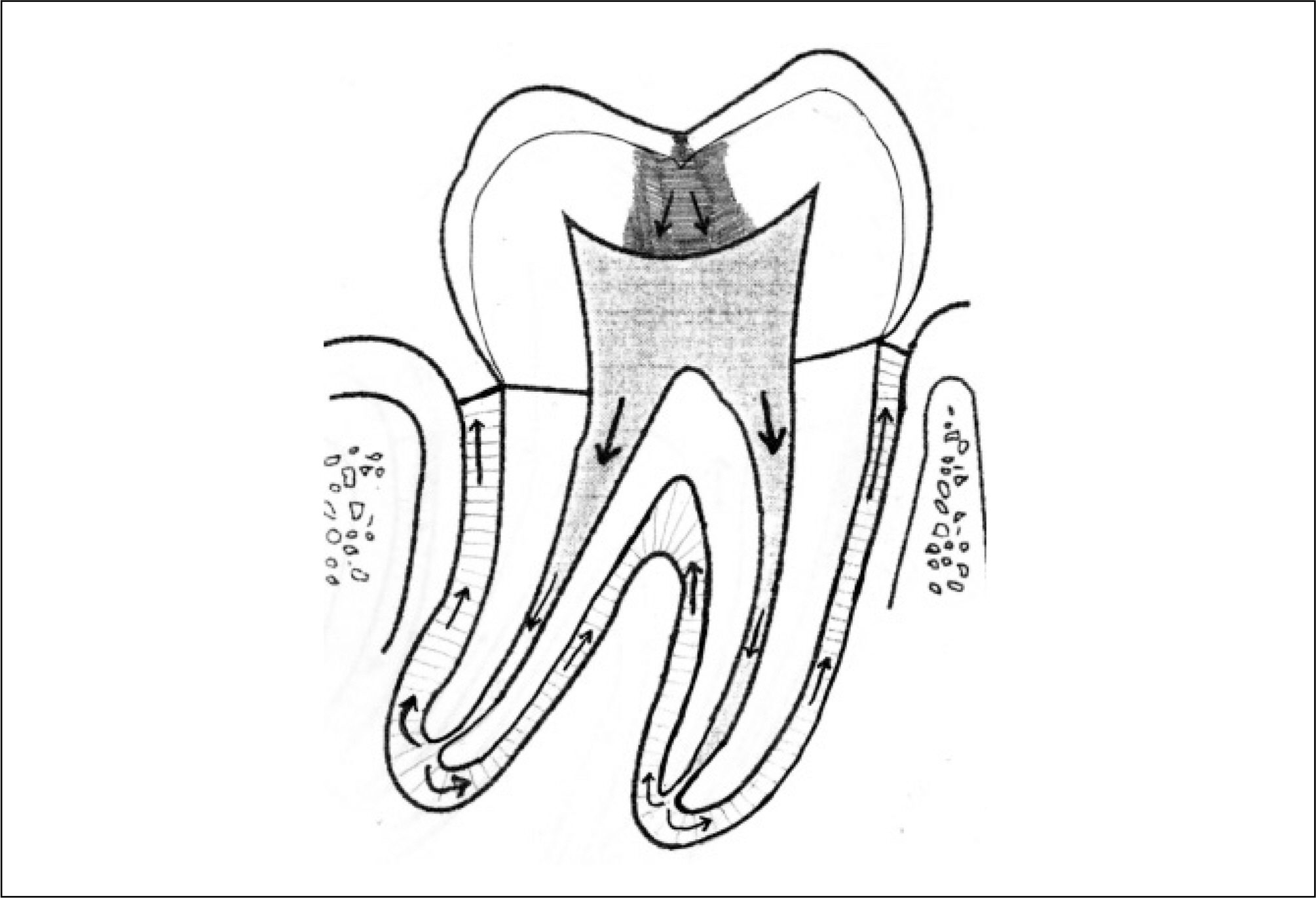J Korean Assoc Oral Maxillofac Surg.
2010 Jun;36(3):221-227. 10.5125/jkaoms.2010.36.3.221.
Crown removal and endodontic drainage as a last method in active gingival bleeding with liver cirrhosis and periodontitis: a case report
- Affiliations
-
- 1Department of Oral and Maxillofacial Surgery, National Health Insurance Corporation Ilsan Hospital, Goyang, Korea. youngdent@naver.com
- 2Department of Oral and Maxillofacial Surgery, College of Dentistry, Wonju Christian Hospital, Yonsei University, Wonju, Korea.
- KMID: 2189953
- DOI: http://doi.org/10.5125/jkaoms.2010.36.3.221
Abstract
- The most common local cause of active gingival bleeding is the vessel engorgement and erosion by severe inflammation. Abnormal gingival bleeding is also associated with the systemic disturbances. Hemorrhagic disorders in which abnormal gingival bleeding is encountered include the following: vascular abnormalities (vitamin C deficiency or allergy), platelet disorders, hypoprothrombinemia (vitamin K deficiency resulting from liver disease), and other coagulation defects (hemophilia, leukemia). There are many conventional methods for gingival bleeding control, such as, direct pressure, electrocoagulation, direct suture, drainage, application of hemostatic agents and crushing and packing. If the active continuous gingival bleeding is not stopped in spite of the application of all conventional bleeding control methods, the life of patient is threatened owing to upper airway obstruction, syncope, vomiting and hypovolemic shock. Therefore, the rapid and correct hemostatic method is very important in the emergency dental care.
Keyword
MeSH Terms
Figure
Reference
-
References
1. Lewis JH. Coagulation defects. JAMA. 1961; 178:1014–20.
Article2. Patton LL, Ship JA. Treatment of patients with bleeding disorders. Dent Clin North Am. 1994; 38:465–82.3. Bartlett JG, Gorbach SL. The triple threat of aspiration pneumonia. Chest. 1975; 68:560–6.
Article4. Little JW, Falace DA, Miller CS, Rhodus NL. Bleeding disorders. Little JW, Falace DA, Miller CS, Rhodus NL, editors. Dental management of the medically compromised patient. St. Louis: Mosby;2002. p. 332–64.5. Dembo JB. Diagnosis and management of oral surgical complications. Falance DA, editor. Emergency dental care: diagnosis and management of urgent dental problems. Baltimore: Lippincott Williams and Wilkins;1995. p. 227–53.6. Conley JJ. Blood vessel complications. Conley JJ, editor. Complications of head and neck surgery. Philadelphia: W. B. Saunders;1979. p. 66–80.7. Alling CC 3rd, Alling RD. Bleeding disorders and injuries. Dent Clin North Am. 1982; 26:71–86.8. Yoo JH, Kang SH, Kim HS, Kim JB. A clinical study on the emergency patients with active oral bleeding. J Korean Assoc Oral Maxillofac Surg. 2002; 28:383–9.9. Min BI. Color atlas o;maxillofacial plastic surgery. Seoul: Koon Ja Publishing;1990. p. 45–61.10. Kruger Go, editor. Textbook of oral and maxillofacial surgery. 6th ed.St. Louis: Mosby;1984. p. 229–54.11. Sonis ST, Fazio RC, Fang L. Principles and practice of oral medicine. 2nd ed.Philadelphia: W. B. Saunders;1995. p. 242–61.12. Glickman I. Clinical periodontology; prevention, diagnosis, and treatment of periodontal disease in the practice of general dentistry. 4rh ed.Philadelphia: W. B. Saunders;1972. p. 123–5.13. Laskin DM, editor. Oral and maxillofacial surgery. 11. St. Louis: Mosby;1985. p. 362–98.14. Grant DA, Stern IB, Everett FG. Orban’ s periodontics: a concept-theory and practice. 4th ed.St. Louis: Mosby;1972. p. 473–83.15. Schluger S, Yuodelis RA, Page RC, editors. Periodontal disease: basic phenomena, clinical management, and occlusal and restorative interrelationships. Philadelphia: Lea and Febiger;1977. p. 459–60.16. Goldberg MH. Prevention and control of infection in the surgical patient. In: Topazian RG, Goldberg MH, eds. Management of infections of the oral and maxillofacial regions. 1st ed.Philadelphia: W. B. Saunders;1981. p. 329–50.17. Kim GS. Local anesthesiology in dentistry. 2nd ed.Seoul: Jee Sung Publishing;1998. p. 353–94.18. Kim SN, Yum KW, Lee MS, Lee SW, Lee SJ. Emergency care in dental office. 3rd ed.Seoul: Jee Sung Publishing;2000. p. 162–87.19. Grossman LI. Endodontic practice. 8th ed.Philadelphia: Lea and Febiger;1974. p. 151–68.20. Lim SS. Clinical endodontics. 1st ed.Seoul: Dental and Medical Publishing;1994. p. 1–15.
- Full Text Links
- Actions
-
Cited
- CITED
-
- Close
- Share
- Similar articles
-
- Severe Recurrent Gingival Bleeding and Toothache Control in a Patient with Liver Cirrhosis and Oral Metastatic Hepatoma: Report of a Case
- Delayed Onset Acute Subdural Hematoma after Burr Hole Drainage in a Patient with Chronic Subdural Hematoma and Liver Cirrhosis
- Bleeding Control by Continuous Wound Drainage of Active Bleeding Sites of Teeth Extraction Wound in a Patient with Advanced Liver Cirrhosis: Report of a Case
- The Expression of RANK and RANKL in Gingival Tissue of Human Chronic Periodontitis
- Two Cases of Adrenal Abscesses Following Histoacryl(R) (N-butyl-2-cyanocrylate) Injection







